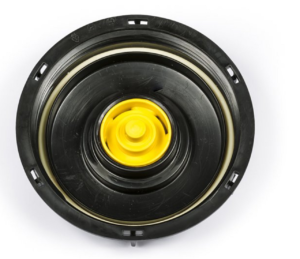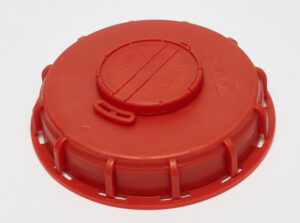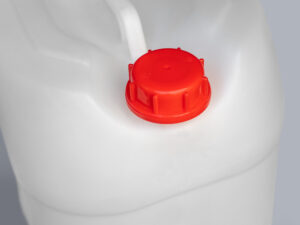Preventing Pressure Build-Up: The Importance of Bottle Caps with Vents
The blog topic is the importance of bottle caps with vents in preventing pressure build-up in sealed containers. Bottle caps with vents are designed to allow gases to escape while keeping the liquid inside the bottle. These vents are essential to prevent pressure build-up inside the bottle, which can cause the cap to loosen or the bottle to burst.
This blog will cover the mechanics of pressure build-up, the design and function of bottle vents, the applications and industries that commonly use them, and the recent innovations in vent design and materials. Highly-concentrated pesticides or fertilizers produce higher levels of off-gassing or oxygen-scavenging. Venting caps protect their bottle packaging from deformation, leaks, and label damage.
We will explore the different aspects of bottle caps with vents, including how they work, the industries that use them, and the innovations that are changing how we think about pressure control in sealed containers. We will also examine the safety and security benefits of using bottle caps with vents and the impact of new technologies on this crucial aspect of packaging.
How Bottle Caps with Vents Work
Understanding the mechanics of pressure build-up in sealed containers is crucial to understanding the importance of bottle caps with vents. Pressure build-up can occur due to temperature changes, changes in altitude, or the release of gases from the liquid inside the bottle. When the pressure inside the bottle becomes too high, it can cause the cap to loosen or the bottle to burst.
Bottle caps with vents work by allowing gases to escape the bottle, preventing pressure build-up. The vents are typically small holes or channels that allow gases to escape while keeping the liquid inside. The size and number of vents on a bottle cap can vary depending on the product and the intended use.
The role of vents in maintaining the integrity and safety of sealed containers cannot be overstated. Bottle caps with vents can help prevent accidents and damage caused by pressure build-up and are an essential aspect of packaging design.
In addition, they also help prevent the formation of a vacuum inside the bottle, making it difficult to dispense the liquid. Vents are essential for some products, such as agrochemical products, typically used in agriculture, chemical, and horticulture. The vents on the caps help ensure that the product can be used safely and effectively. And the same way, the closure should have a hole or vents on the top to escape the pressure air to the environment.
Applications of Bottle Caps with Vents
Bottle caps with vents have many applications and are used in many industries. Some of the most common applications include agrochemical products, chemical products, and compressed gases.
Chemical products, such as cleaning solutions and industrial chemicals, also commonly use bottle caps with vents to prevent pressure build-up and maintain the product’s safety. Compressed gases, such as propane and compressed air, commonly use bottle caps with vents to release pressure and ensure safety during transportation and storage.
The benefits of using bottle caps with vents in these applications include the following:
- Preventing accidents and damage caused by pressure build-up.
- Making it easier to dispense the liquid.
For example, in the case of agrochemical products, the vents allow the pressure to be released, preventing the liquid from splashing out of the bottle when it’s being used.

For example, an agrochemical company might provide data on how using bottle caps with vents has improved the safety and effectiveness of its products. Or a compressed gas company might share an incident where the pressure build-up caused an accident, but using bottle caps with vents prevented similar incidents from happening in the future. These examples illustrate the importance of bottle caps with vents in different industries and applications.

The taken-Care point before using the Vents
- Need to ensure the leakage of the product from the vents.
- to assure the leakage due to changes in the viscosity of the product because of temperature variation
- Shelf life of vents hole
- A product layer can be deposited on the vents, which won’t work.
- Bursting of vents due to throwing of bottle
- Vent size needs to be calculated before implementation.
- The same type of compatible closure will be used for the specific vents.
- The shelf life of the product will be changed once using the vents.
- Membranes of the vents need to be hydrophobic and oleophobic, and as a result, they are not moistened even by liquids with low surface tension.
Innovations in Bottle Cap Vents
- The design and materials used for bottle cap vents have evolved over time, and new technologies continue to emerge. One recent innovation is the use of specialized polymers for vents. These polymers are designed to be more flexible and durable than traditional materials, making the vents less likely to become clogged or damaged.
- Another innovation is using smart bottle caps with sensors that can detect when pressure is building up inside the container. These caps can then automatically release pressure before it becomes a problem, making them even more effective at preventing accidents and damage.
- Some companies use 3D printing to create customized vent designs for specific products and applications. It allows for greater vent size and placement flexibility, which can improve the performance and safety of the bottle.
Overall, these innovations are helping to improve the performance and safety of bottle caps with vents, making them an even more important aspect of packaging design. They also demonstrate how technological advances can create more effective and efficient packaging solutions.
The evolution of technology has resulted in new materials and designs for bottle cap vents, making them more effective and efficient.
Vented are generally available for all products, rigid packs, small SKU bottles, jars, drums (metal and plastic), and IBCs.







